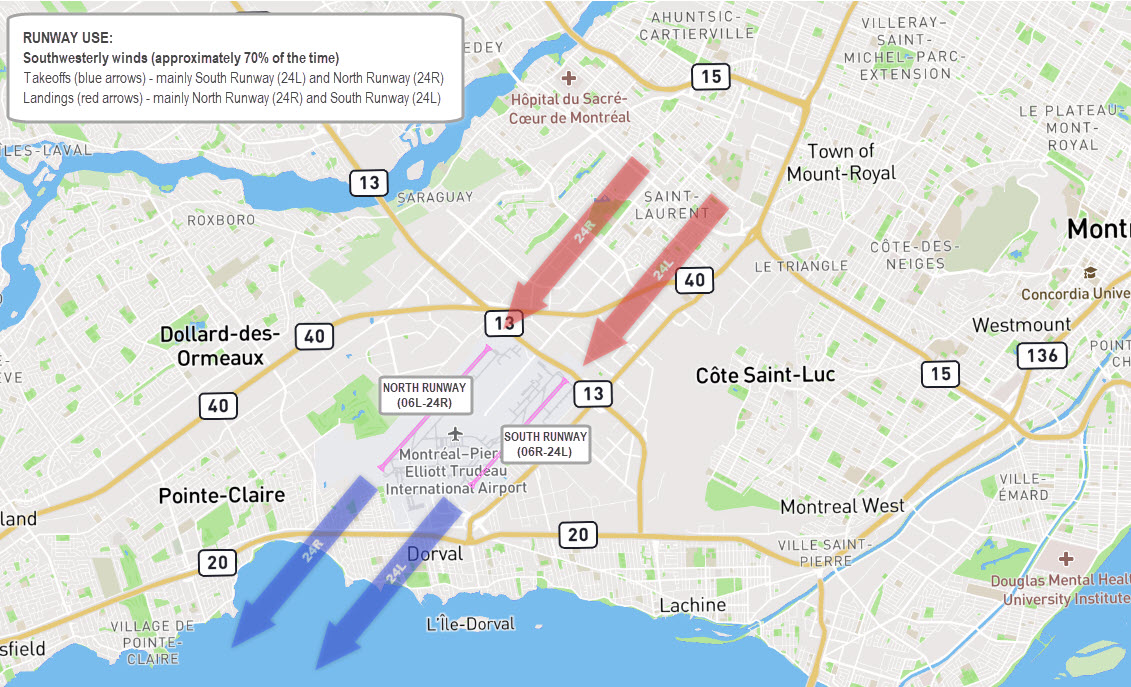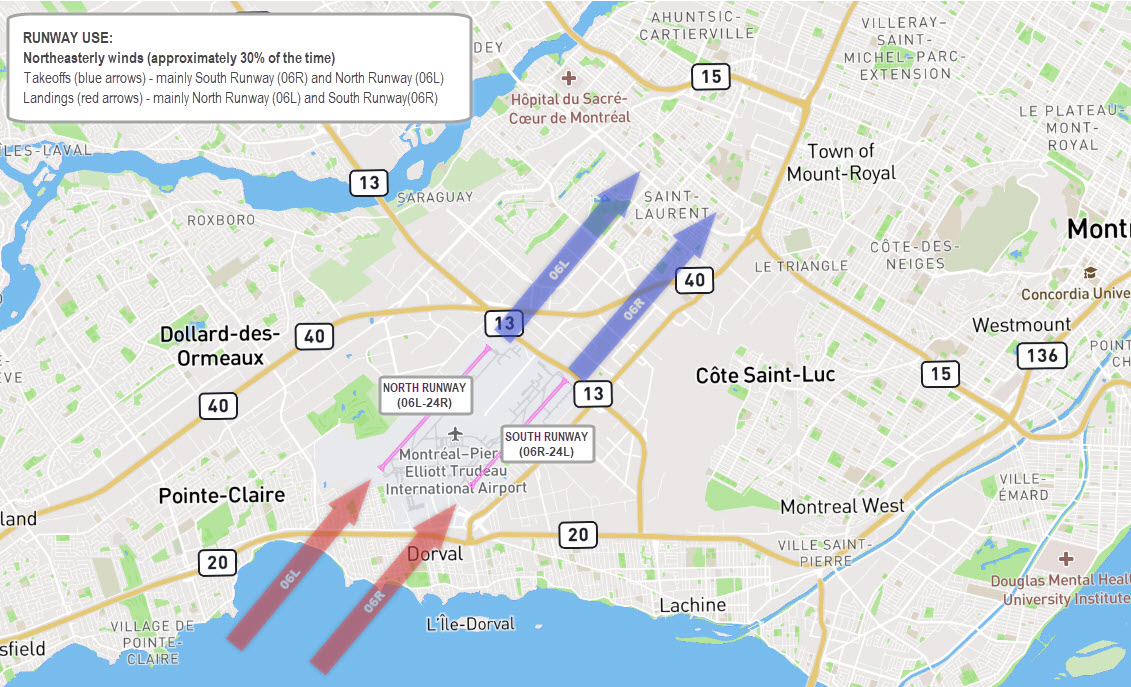Airlines and pilots are required to comply to the noise abatement procedures in effect at YUL Montréal–Trudeau in order to reduce noise disturbances generated by air traffic.
Takeoff and landing procedures
Planes must take off and land into the wind. At YUL Montréal–Trudeau, the prevailing winds are southwesterly, so aircraft usually land and takeoff in the direction of Lake St. Louis (southwest).
In addition to the exceptional procedures during restricted operating hours (see below), pilots are required to follow these procedures at all times:
-
After takeoff, jets must climb on runway heading to a minimum altitude of 915 metres (3,000 feet) before turning. Turboprop and piston (propeller) aircraft initiate a turn as soon as possible following takeoff to clear the runway's flight path.
-
While landing, jet pilots must be aligned with the runway’s centre line on final approach, respecting an angle of descent of 3 degrees; pilots must also adjust the thrust/drag speed on descent, to the extent that safety permits, in order to achieve minimum noise levels.
Usual Runway Use


Operating restrictions during certain hours
Montréal–Trudeau Airport is open 24 hours a day to propeller planes and jets weighing less than 45,000 kilograms. As for jets weighing more than 45,000 kilograms, normal hours are between 7 a.m. and midnight for takeoffs and between 7 a.m. and 1 a.m. for landings.
Aéroports de Montréal (ADM) does, however, have the right and the authority to grant exemptions for medical emergencies, delays beyond a carrier’s control and adverse weather conditions as well as for some regular flights.
A strict internal policy applies in such cases. In particular, exemptions for scheduled flights represent a very small percentage of total traffic and they must be supported by strong operational reasons; furthermore, they are contingent to compliance to the noise abatement measures.
ADM grants exemptions to some flights for departures before 7 a.m. and for late arrivals. However, only the quietest aircraft are eligible.
Restrictions on engine testing
Engine testing at high RPMs for inspection or maintenance purposes is forbidden between 11 p.m. and 7 a.m. Special permission may be granted in some cases, such as when aircraft must be on standby to respond to emergencies in isolated regions. Engine testing at high RPMs is performed in areas chosen to minimize noise disturbances for nearby residents.
Assignment of priority runways for night flights
Night-time runway use is determined by a priority runway assignment system outlined in the Canada Air Pilot (CAP).
This assignment is dependent on wind direction:
Southwesterly/westerly winds (70% of the time): South Runway (24L) for takeoffs and North Runway (24R) for landings
Easterly/northeasterly winds (30% of the time): North Runway (06L) or South Runway (06R) for takeoffs and landings



